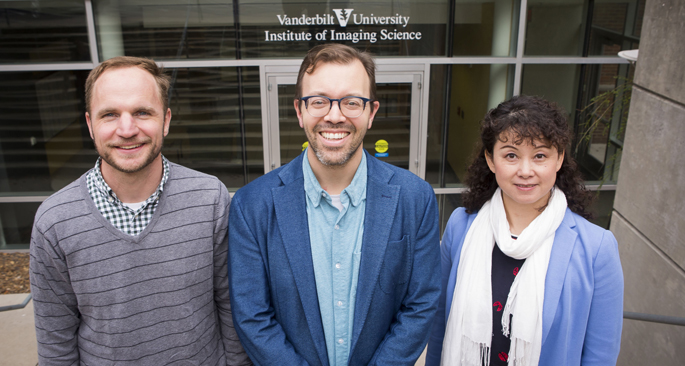
With $3.6 million in funding, researchers from the Vanderbilt University Institute of Imaging Science are developing a focused ultrasound neuromodulation device as a non-invasive and non-addictive method for treating chronic pain.
The funding was awarded by the National Institutes of Health as part of the Helping to End Addiction Long-term Initiative, also known as the NIH HEAL Initiative, which aims to improve treatments for chronic pain, curb the rates of opioid use disorder and overdose and achieve long-term recovery from opioid addiction.
The device will look like an MRI head coil and combine functional MRI with ultrasound neuromodulation. The combination will allow researchers to simultaneously alter neuronal activity in brain regions associated with pain and monitor the response in real-time using functional MRI.
While other devices to treat pain exist, their efficacy is limited by inaccurate targeting of pain regions and circuits in the brain, the researchers said.
The VUIIS research team includes William Grissom, associate professor of biomedical engineering; Charles Caskey, assistant professor of biomedical engineering and radiology and radiological sciences; Li Min Chen, assistant professor of radiology and radiological sciences; and University Professor John Gore, who holds the Hertha Ramsey Cress Chair in Medicine and is a professor of radiology and radiological sciences as well as biomedical engineering. They hypothesize that ultrasound neuromodulation technology will allow for accurate and reliable stimulation of specific pain targets through enhanced, image-guided control.
“Ultrasound neuromodulation is a pretty new and exciting area because it allows you to alter activity non-invasively, with fine spatial precision, in deep or superficial brain targets,” Grissom said.
In 2016, an estimated 50 million U.S. adults suffered from chronic pain, and in 2018, an estimated 10.3 million people 12 years and older in the U.S. misused opioids.
Drug-based treatment plans for chronic pain are associated with negative consequences, such as addiction and drug diversion. Device-based treatments offer an alternative that may eliminate these risks.
“Despite their benefits, device-based solutions, such as deep brain stimulation, are often avoided or considered last resort, partly because it is challenging to know prior to implantation whether the pain node being stimulated will alleviate chronic pain symptoms,” the researchers wrote in their project proposal. “Understanding how different neuromodulatory effects at various targets affect pain will improve the efficacy of existing methods and guide the development of individualized treatments in the future.”
The study will target three brain regions. Clinicians already use deep brain stimulation and ablation procedures for pain relief to treat chronic pain conditions from a stroke, limb loss and cancer. The device will also target nociceptive pain, or pain that occurs when body tissue is damaged during surgery or by an external force, such as torn muscles after excessive exercise.
The goal of the study is to test the device’s accuracy, efficacy and safety in animals to develop a clear path for IRB-approved use of the technology in humans.
The study’s design combines multidisciplinary expertise in MRI and magnetic resonance-guided focused ultrasound (Grissom), ultrasound (Caskey) and the physiology and imaging of pain circuits (Chen and Gore). The principal investigators are all housed in VUIIS, and device testing will occur in collaboration with the Vanderbilt Institute for Surgery and Engineering.
This research is supported by grant MH-111877.
by Kelsey Herbers, VUMC